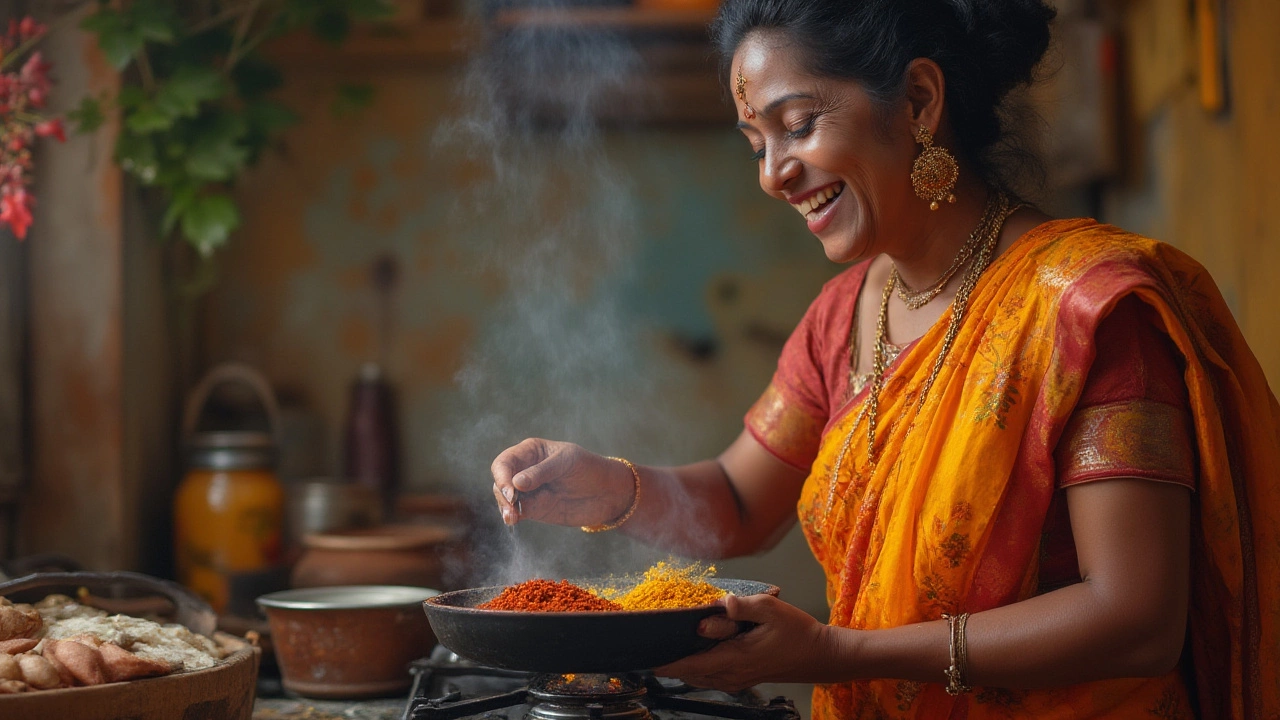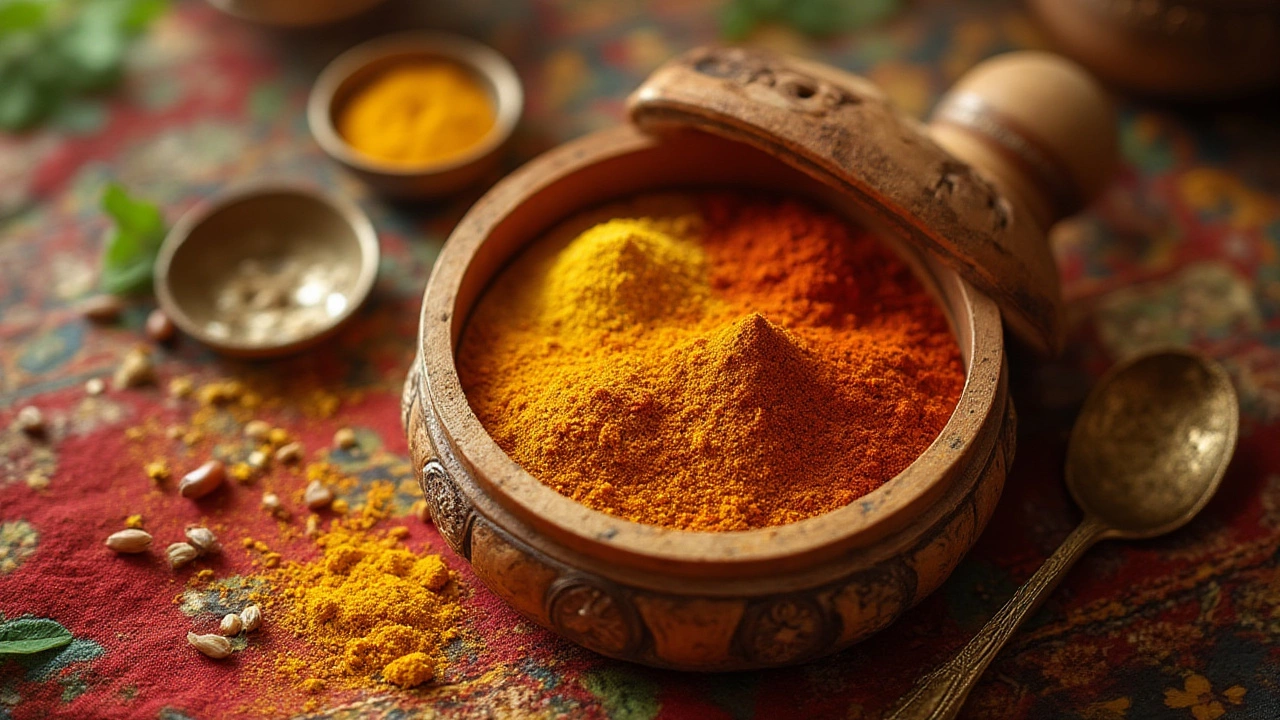Curry isn’t just a dish—it’s a flavor bomb, a comforting hug from a spice-laden pot, and the purest introduction to the magic that is Indian cooking. But there’s a running joke in Indian kitchens: everyone has ‘the’ curry recipe, passed down or patched up. Yet almost all of them start with five familiar faces from the spice rack. Ready for the real magic behind your favorite curry? These five essential spices are the backbone of every great curry, whether it’s bubbling in an old Delhi home or sizzling in a London curry house. Curious about what they are—and why cooks guard them like treasure? Prepare to have your senses tingled, your food IQ boosted, and your next trip down the spice aisle completely transformed.
The Backbone of Curry: What Makes These 5 Spices Non-Negotiable
Walk into any traditional Indian kitchen and your nose will do a happy dance. Earthy, smoky, warm, and sometimes sharp—those aromas aren’t an accident. At the center are five iconic spices: cumin, coriander, turmeric, chili powder, and garam masala. These form the curry spices foundation, going in almost every classic curry recipe you can think of.
Let’s unpack why this combo is unstoppable. Cumin seeds, with their toasty, nutty vibe, build base aroma and flavor depth. People toast them whole or use their ground form—sometimes both. Studies from Indian food historians reveal that ancient Ayurvedic texts prized cumin not just for taste but for its digestive powers. In fact, a quick test: cook onions without cumin and with cumin. Your nose will tell you how much it matters.
Coriander seeds, next up, balance the cumin. They bring a gentle citrus note that tames bold chili heat and keeps curries from tasting flat. The seed’s oil content is why freshly toasted and ground coriander sparkles, and grocery-bought powder often falls flat. If you ever wondered why restaurant curries taste better, this tiny detail is one big reason.
No curry is really golden without turmeric. Beyond the color, turmeric brings earthiness and a subtle bitter edge that gives complexity. Fun fact: turmeric is a cousin of ginger, and its active compound curcumin has been linked to anti-inflammatory properties in thousands of published studies. Indian grandmas will still insist a curry needs it ‘for your health.’
Then there’s chili powder, that little red powder that turns a bland stew into a fiery crowd-pleaser. Indian chili powders, often brighter and milder than their Mexican cousins, let you build up the heat gradually. Regional variations exist—a Kashmiri chili adds color, not so much burn; Byadgi chilies score high on aroma and color, too.
Last of the five: garam masala. Not so much a single spice as a secret blend, ‘garam masala’ actually means ‘warming spices’ in Hindi. Every household has its own combo, but it typically includes cloves, cinnamon, black pepper, cardamom, nutmeg—and sometimes even bay leaves or mace. Often sprinkled in at the end for a punch of aroma, it’s what turns a good curry into something honestly mouthwatering.
Put them all together, you’ve got everything: depth from cumin, freshness from coriander, richness from turmeric, heat from chili, and brilliance from garam masala. That’s not just tradition; it’s about playing with science and your taste buds.
Behind Each Spice: Flavor, Health, and Kitchen Magic
The story of these five curry spices goes beyond taste—they’re a lesson in how history, health, and culture all meet inside your saucepan. For starters: cumin is more than a background dancer. It’s loaded with iron (just 1 teaspoon covers 17% of daily iron!), and dozens of studies suggest it aids digestion by boosting pancreatic enzyme secretion. Not bad for something that costs pennies a pinch.
Coriander is another quiet overachiever. The seeds contain linalool, a compound shown in some studies to reduce anxiety and even lower blood pressure. Chefs will grind coriander just before cooking to keep the delicate aromas from fading—so if you’re buying a bag, get the whole seeds. Toast them lightly, grind, and thank yourself later.
Turmeric’s jaws-dropping color has made it a darling not just of cooks but also health gurus. It’s been used as a dye, a medicine, and, let’s admit it, a stain for white T-shirts. The main ingredient, curcumin, has over 12,000 peer-reviewed articles praising its anti-inflammatory, anti-cancer, and antioxidant properties. Still, don’t expect your curry to turn into a magic pill—but you can feel a little smug with every golden spoonful.
Chili powder’s impact can be almost too obvious, but did you know the type you use makes a huge difference? India grows more than 60 types of chilies, each with unique flavors and strengths. The capsaicin in chili isn’t just for heat—it can help boost metabolism by increasing thermogenesis, and even elevate your mood by releasing endorphins. If you want less heat, opt for Kashmiri or Byadgi powders; for face-melting fire, Guntur chilies are your friend.
Garam masala isn’t about heat; it’s about ‘warmth.’ The components (cloves, pepper, cardamom, etc.) come loaded with essential oils that go straight to your nasal passages. They’re full of antioxidants, and Indian families have custom versions based on what’s locally available. Store-bought masalas are convenient, but fresh-made makes everything taste better—think Saturday afternoon kitchen session and a room full of intoxicating scent. Here’s a quick hint: keep your garam masala in an airtight glass jar, away from sunlight, and it’ll stay bold for months.
Curious about what makes these spices tick? Here’s a little cheat sheet that doubles as a mini-guide for your shopping trips:
| Spice | Main Flavor Notes | Health Benefits | Pro Tip |
|---|---|---|---|
| Cumin | Warm, earthy, nutty | Aids digestion, iron-rich | Toast whole seeds before use |
| Coriander | Citrus, floral, mild spice | Anti-anxiety, helps digestion | Grind seeds fresh for max flavor |
| Turmeric | Earthy, slightly bitter | Anti-inflammatory, antioxidant | Pair with black pepper to boost absorption |
| Chili Powder | Pungent, smoky, heat | Boosts metabolism | Mix mild and hot varieties for balance |
| Garam Masala | Warm, complex, aromatic | Antioxidant-rich | Add near the end of cooking |

Tips and Tricks for Using Curry Spices Like a Pro
You don’t have to be a chef to make these spices sing; just a little know-how takes you far. Start by measuring carefully—Indian food isn’t always about dumping in spices by the spoonful. A heavy hand with chili can throw off a whole dish, and too much turmeric leaves a bitter aftertaste. Keep your spices fresh. Whole versions last longer, so if you spot cumin seeds, coriander seeds, or dried chilies, pounce! Store them in glass jars, away from direct sunlight and humidity. Paper packets from the store lose aroma within weeks.
Toasting is non-negotiable for maximum aroma. Place whole spices in a dry pan over medium heat and stir constantly. When they pop and release a nutty smell, pull them off immediately—they can burn fast.
Grinding fresh at home beats pre-made powders every time, especially for cumin and coriander. Small, cheap coffee grinders work great for small batches. With garam masala, make a little fresh every month (not a whole year’s supply). The oils degrade over time and you just can’t fake that just-ground aroma.
If you’re after a custom flavor, it helps to play around with ratios. Want more brightness? Bump up the coriander; after a earthy finish? Go all in on cumin. For deeper heat, mix chili varieties—a touch of smoky paprika with a sharp Indian chili works magic. Ever wondered why restaurant curries taste so complex? They often layer in chilies 2-3 ways: fresh, dried, plus powder.
And here’s a little secret: adding black pepper with turmeric boosts your body’s absorption of curcumin almost 20 times, thanks to a compound called piperine. That’s why recipes for ‘golden milk’ always toss in a pinch of pepper. Try it in your curry—the health boost is real.
- Don’t cook garam masala for too long; its delicate flavors can fade with extended heat.
- Use a neutral oil like sunflower or canola to let your spices shine. Olive oil’s strong flavor can muddle delicate notes.
- If a sauce feels flat, stirring in a bit of garam masala, salt, or a pinch of chili at the finish can rescue the dish.
- Keep a small ‘spice tarka’ skillet just for toasting and tempering spices. It makes clean-up easier and keeps flavors from overlapping.
- Keep spices in airtight containers—a simple hack to double their shelf life.
Above all, don’t be afraid to experiment. Indian families constantly tweak their spice mixes based on fresh chili arrivals, grandma’s mood, or what’s in the pantry. Spices are forgiving, provided you don’t go rogue with cinnamon or drown everything in turmeric. Once you’ve nailed the basics, you can riff on dishes with anything from smoky black cardamom to sweet green fennel.
Blending 5 Spices: How Cultures, Regions, and Memories Shape Curry
Travel across India and you’ll bump into hundreds of variations of curry—some packed with coconut and curry leaves, others swimming in yogurt or tomato. But this famous five-spice combo sits at the heart of it all. Here’s where things get really interesting: each region puts its own spin on the core blend.
In Punjab, expect robust, earthy curries tricked out with extra cumin, plus ginger and garlic. Down in Kerala, the core five often get backup from curry leaves, coconut, and black pepper. Bengal loves a punch of mustard seed and a sprinkle of sugar with the five. Even garam masala takes regional twists—North Indians swear by the heady mix of cardamom and cinnamon, while South Indian blends are sharper with more pepper and clove.
The British version of ‘curry powder’ was born from nostalgia for the Raj, but it’s really just a pre-blended snapshot of the North Indian pantry. Authentic Indian curries still start by frying cumin and coriander in hot oil, layering in turmeric, getting the warmth from garam masala, and dialing up or down the chili to taste.
Memories play a big role in spice selection. One Kolkata cook described how her mother’s dal always smelled of coriander and cumin, but her mother-in-law’s version ramped up the chili. Ask anyone from the Indian diaspora, and they’ll recall the precise aroma of childhood curries—a signature blend that brings instant comfort and nostalgia, no matter where they are in the world.
Cooking with these five spices is more than just following a recipe. It’s about tasting as you go, letting your senses lead, and understanding that every good curry is built on balance. Modern chefs in Delhi experiment with unusual additions—dried mango powder, toasted fenugreek, or even a hint of star anise. But the basics never change, because those five spices set the foundation for everything else. Master the big five, and soon you’ll find yourself creating curries worth bragging about, wherever home may be.
